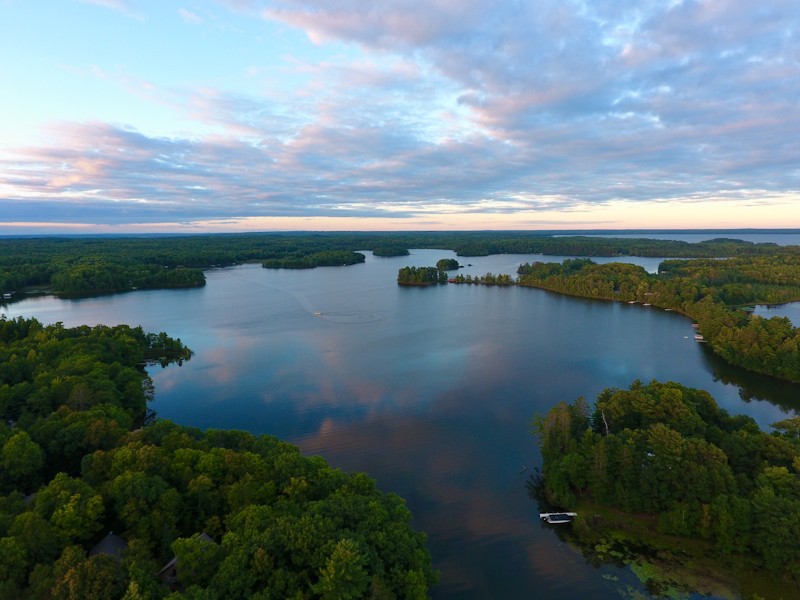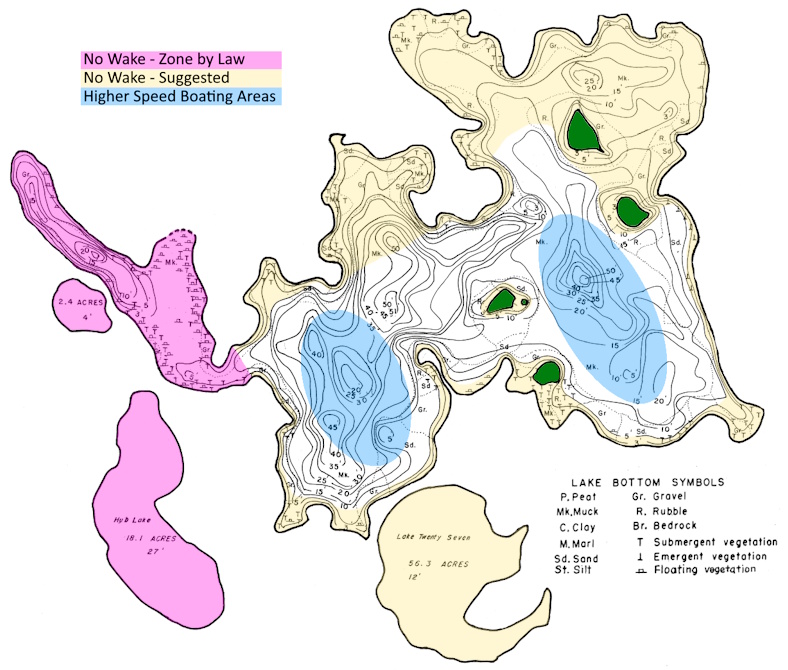Nestled in the heart of the Northwoods, Windigo Lake is a pristine freshwater gem known for its crystal-clear waters and abundant wildlife. The lake is irregular in shape, with numerous peninsulas and bays. Windigo Lake is about 530 acres in size (including islands), approximately one mile in diameter, and a shoreline of nine miles. The lake has been a cherished recreation destination and home to generations of families since the early 1900s.
Lake Features
Windigo Lake is a seepage lake without obvious inlet or outlet streams. Its maximum depth reaches 51 feet, with an average depth of 14 feet. The lake supports a diverse ecosystem including:
- Fish Species: Walleye, Northern Pike, Largemouth Bass, Smallmouth Bass, Perch, Bluegill, and Crappie
- Wildlife: Loons, Bald Eagles, Herons, Otters, Beavers, Black Bears, and White-tailed Deer
- Plant Life: Wild Rice, Water Lilies, and various native aquatic plants

Lake History
Windigo Lake, nestled in the heart of northwestern Wisconsin, carries a name rich in history and folklore. Its name originates from “Windigo” (sometimes spelled Wendigo), a legendary spirit in Ojibwa and Ottawa mythology—often depicted as a fearsome, cannibalistic creature. But the name also evokes a poetic meaning: “lake of many winds,” inspired by the ever-shifting ripples that dance across its surface. For generations, it has been a place of reflection and spiritual insight—an enduring retreat for those seeking inspiration. Before it became known as Windigo Lake, this storied body of water was called by other names. In 1831, explorer Henry Schoolcraft referred to it as “Lac des Isles”—French for “Lake of the Isles.” A year later, Captain James Allen, who mapped the region during an expedition to the Mississippi’s source, labeled it similarly on his detailed chart. The Wisconsin DNR has also listed “Bass Lake” as an alternative name, a title still remembered in local historical records. Long before European explorers arrived, Windigo Lake was part of the ancestral homeland of the Ojibwa people. The area saw its first European visitors around 1659 when explorers Pierre-Esprit Radisson and Médard des Groseilliers traveled south from Lake Superior. By the mid-18th century, Windigo Lake had become a key point along an important travel and trade route, linking Lac Courte Oreilles through Grindstone Lake and the Namekagon Portage to the St. Croix River watershed. The lake’s legacy continued through the journals of Jonathan Carver, who journeyed through the area in 1767, and later through the writings of Schoolcraft, who detailed his 1831 crossing via Windigo Lake en route from the St. Croix to the Chippewa River watershed. Today, Windigo Lake remains a tranquil, storied place. Its waters still whisper the winds of the past, inviting all who visit to pause, reflect, and connect with the timeless spirit of the land.
The Windigo Lake Association was formed in 1974 when property owners united to address water quality concerns and promote responsible lake stewardship.
Conservation Efforts
Our lake faces several environmental challenges that our association actively monitors and proactively addresses so that Windigo remains a jewel of Wisconsin:
- Water quality testing (clarity, phosphorus, oxygen levels)
- Aquatic invasive species prevention and education
- Shoreline preservation and natural buffer initiatives
- Responsible boating and fishing practices education
Recreational Activities
Windigo Lake offers year-round recreational opportunities:
- Summer: Swimming, fishing, boating, kayaking, canoeing, wildlife watching
- Fall: Fishing, hiking surrounding trails, enjoying fall colors
- Winter: Ice fishing, snowmobiling, cross-country skiing, snowshoeing
- Spring: Birding, fishing, wildflower viewing
Wake-enhanced boating is now restricted on Windigo Lake under the Town of Bass Lake’s updated ordinance, which limits enhanced-wake activity to areas 700+ feet from shore and 30+ feet deep. Windigo does not meet these conditions. For details, see the full news release.
Location and Access
The lake is located in Sawyer County, approximately 6 miles south of the city of Hayward, the primary commercial and retail center of the area. The shore of the lake is principally occupied by seasonal lake cabins and homes. There is one public boat landing on the southeastern shore of the lake. Windigo Lake is a popular resort area, drawing cabin owners and visitors from the Minneapolis-St. Paul, Milwaukee, and Chicago metropolitan areas.
